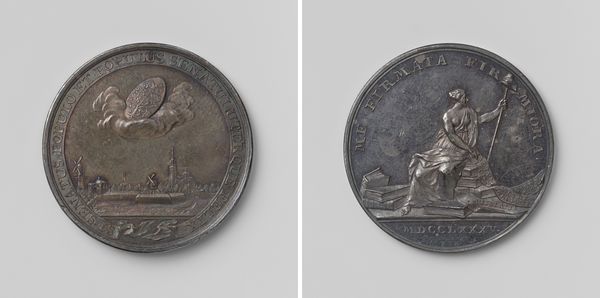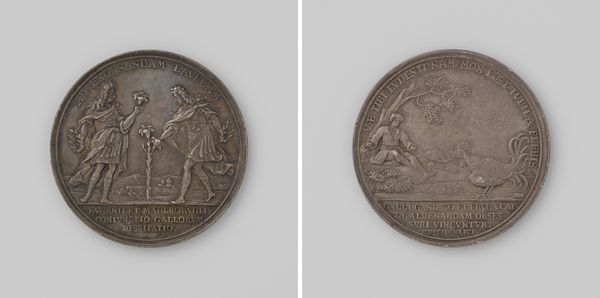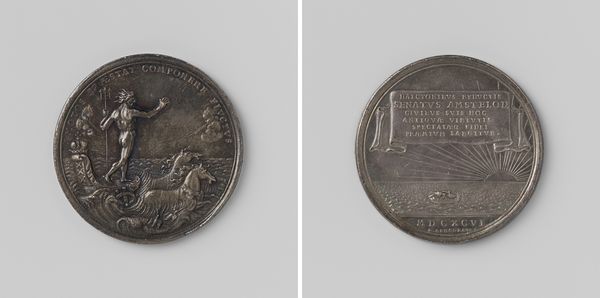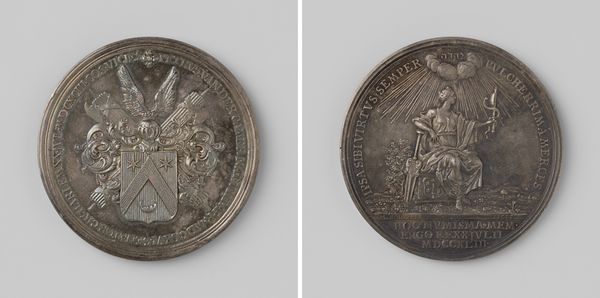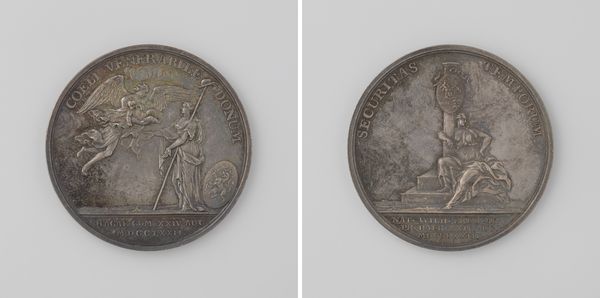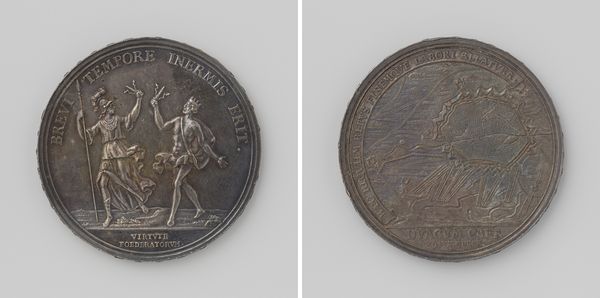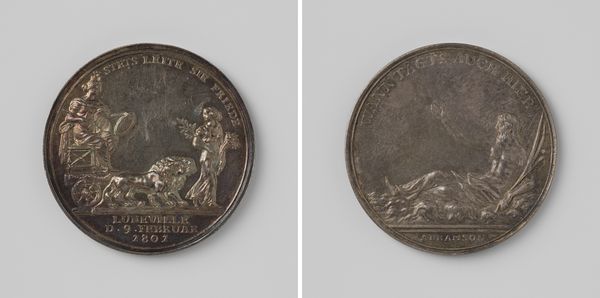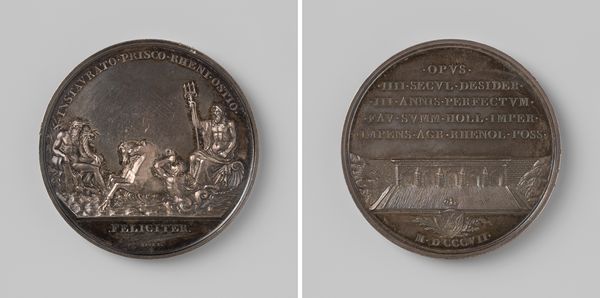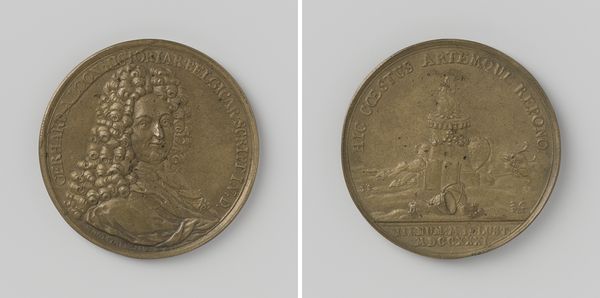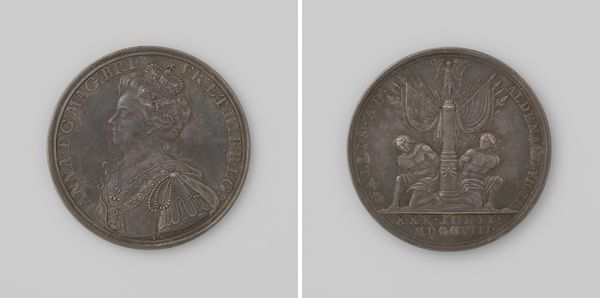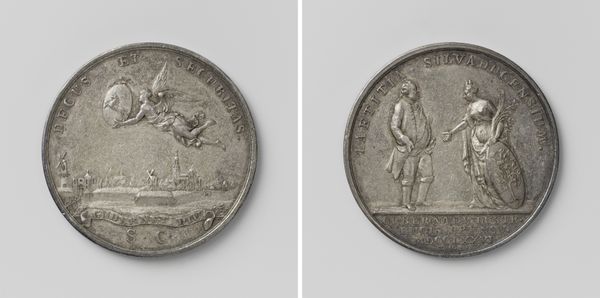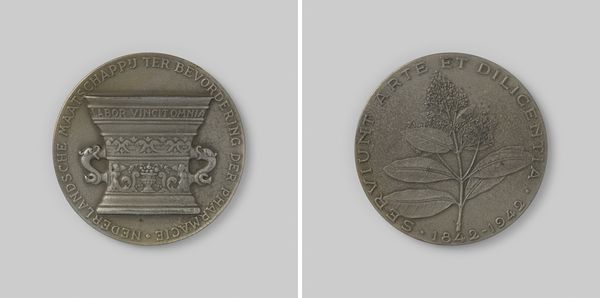
metal, relief, sculpture
#
baroque
#
metal
#
sculpture
#
relief
#
sculpture
#
history-painting
Dimensions: diameter 3.8 cm, weight 141 gr
Copyright: Rijks Museum: Open Domain
Editor: This object is a medal, titled "Tweede eeuwfeest van de Reformatie," or Second Centenary of the Reformation, made in 1717 by Philipp Heinrich Müller. The material looks like silver or some kind of metal, and it's a relief sculpture. The contrast between the two sides is very striking. What do you make of its materiality? Curator: Its materiality is, of course, paramount. Silver, readily circulated, becomes a powerful tool in disseminating ideological messages. A medal struck in silver signifies permanence and value, but also accessibility – more people could own or see one than a grand painting, say. Who was this object made for? Were these intended to be distributed widely, or were they symbols for select groups invested in maintaining specific social structures? Editor: That makes sense. On one side, there’s a bird, a table, and the words "Der Tag vertreibt die finstre Nacht" – "the day drives out the dark night." On the other, a figure sits with a book and cup. "Steh stille bis der Streit vollbracht" – stand still until the fight is over, it reads. Is there something inherently subversive by using such precious metal for an essentially populist cause? Curator: Subversion is about challenging norms, right? Metal, being easily molded, represents not just value but labor itself. These medals become artifacts of cultural work—the minting, the distribution, the social contexts within which these objects were consumed. Do you see a hierarchy being implicitly established via this method? Does the silver material establish a class and power dynamic that contradicts the intention behind Reformation? Editor: Interesting. The craftsmanship suggests the expense would inherently exclude. Curator: Precisely! The intrinsic value and the cost of production are completely linked, and speak volumes about the era. The medal's very form and materiality shaped, and likely limited, its influence. It pushes me to consider who had access to it and whose voices were excluded. Editor: So the value lies not only in the message but in understanding the process by which that message was created and circulated. Curator: Absolutely! And that's the power of approaching art through its material reality.
Comments
No comments
Be the first to comment and join the conversation on the ultimate creative platform.
